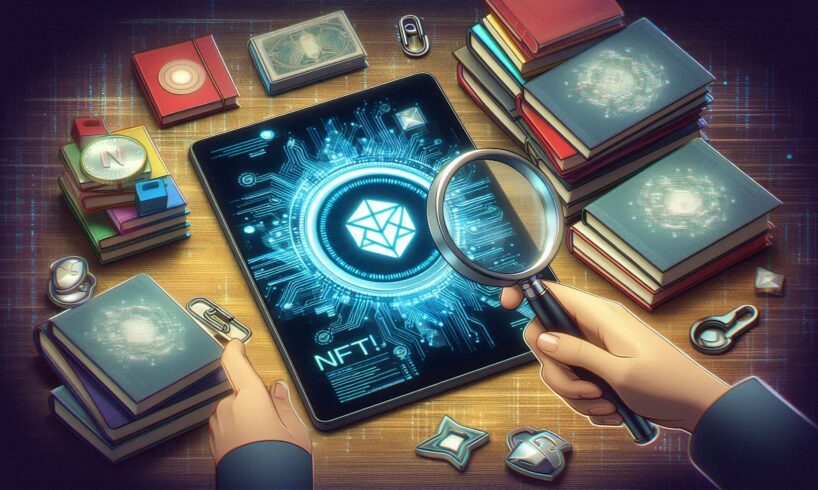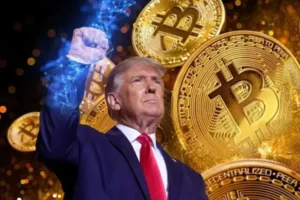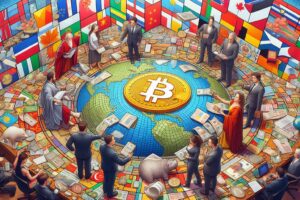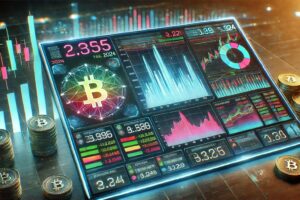
NFTs have garnered much popularity over the past few years for how they change the face of buying, selling, and valuing of digital assets. Indeed, whether as an artist, collector, or investor, finding the resale value of an NFT is one aspect to be taken into consideration before making decisions in this fast-changing market. In this article, we will explain the different components that determine the resale value of an NFT and provide a step-by-step way of calculating it.
Understanding NFTs

But first, before jumping the gun on the review process, there’s a need to understand what NFTs are. NFTs are unique digital assets confirmed with blockchain technology, and this confirmation verifies their authenticity and ownership. What makes an NFT different from any other currencies, like Bitcoin or Ethereum, is that it is unique, and unlike other currencies, NFTs are non-fungible and can’t be exchanged for another; hence, what makes an NFT exciting and so desirable for collectors and investors is its uniqueness.
Also Read: How to Convert Cryptocurrency to Cash: A Comprehensive Guide
Factors Affecting NFT Resale Value
NFT’s resale value depends on several factors. The more information you gain on those, the better you will be at estimating your digital asset’s value.
-
Rarity and Scarcity
The price of an NFT depends largely on how rare it is. A more valuable NFT would be one that is part of a limited series or even one-of-a-kind by a popular artist. The example would be an NFT in a popular collection but with very few pieces, just like Cryptopunks or Board App Yacht Club. In such cases, it would likely be highly demanded and worth reselling in real value terms.
-
Popularity of the Creator
Reputation of the creator also influences the resale value of an NFT. The highest-selling artists or popular creators will sell their work at a greater price. The number of followers that an artist or creator has or more successful sales previously, so in the case of an NFT and the creator’s popularity is higher. In contrast, on the contrary, the resale value will be very small if an unknown artist has created that work.
-
Market Trends
The markets are constantly changing, and the NFT markets can go very volatile. Overall sentiment in the NFT space affects the price of some NFTs. Knowing the current trends, most popular collections, and the rising artists is quite important in estimations of potential resale values. In this respect, you can check out the sales and collections on OpenSea, Rarible, and Foundation to see what’s going down.
-
Effectiveness and Usability
Others have additional utilities or functionality, meaning they are worth more. For example, any NFT that allows the holder to participate in some form of exclusive content, event, or communities are normally pric higher than those who do not serve more purposes other than aesthetics, NFT. That is to say, the greater the utilities offered by the NFT, the better resale price it could be sold at.
-
Condition and history of ownership
As with any type of traditional art, the provenance of an NFT can add to its sale price. Although digital artefacts themselves do not deteriorate physically, there is another limiting factor: ownership history and prior sales. A nice provenance or history of ownership by notable owners can make an NFT more valuable and much more desirable to sell at a price.
-
Social Evidence and Community
Of course, the community behind an NFT collection also affects its resale value. Demand and increasing prices can be creat by a strong, engaged community. Social proof in terms of celebrity or influencer endorsements can also boost the perceived value of an NFT.
-
Markets and Fees
The resale value of your NFT can depend on the platform you choose to sell it on. As there are quite a few different platforms with varying fee structures and audiences, the specific marketplaces you use can affect demand and price. Be sure you know the fees of the platform because they can eat into your otherwise healthy profits.
Calculating NFT Resale Value

Understanding the factors that determine the resale value of an NFT, let’s proceed step by step how to calculate it.
Step 1. Research comparative sales.
Research the most recent sales of similar NFTs. You’ll want to find out what the same artist, or within the collection, and like attributes of rarity, utility, and the reputation of the creator sell for. OpenSea and Rarity.tools can give some insight into recent sales and current listings.
Step 2: Analyze historical data.
Review the historical price trends of similar NFTs. You can understand the ups and downs in the value of an NFT over time by analyzing their price charts and transaction histories. Look for seasonal trends or growth at specific events.
Step 3: The current market conditions must be factored.
Evaluate the current state of the NFT market. Is it growing, or is it in a decline? Sentiment towards the market overall will impact demand for specific NFTs, so having a sense of the bigger picture is helpful. Closely watch news, social media trends and market analysis reports to gain insight.
Step 4: Determine what sets this NFT apart.
The rarity, reputation of the creator, and utility of the NFT would be some unique features of this NFT you are rating. If it has something unique that makes this particular copy different from the others, then this NFT might deserve a better resale price.
Step 5: Fees
While setting the resale price, don’t forget the market fee that sometimes trades with it. Most of the websites cost percentage on the selling price. Be extremely variant. So first, determine those costs to know how much exactly you will net from the sale.
Step 6: Find the real price.
Determine a resale price from your research and analysis. You can list it a little below market rate in case you desperate need to sell quickly to grab the attention of most possible buyers. Also, in case your NFT has unique features or is high in demand, then you can assign it a higher price tag, leaving room for negotiation.
Step 7: Monitor and adjust.
Once you have a resale list, you would be constantly observing the market, and you will have the option to change the pricing of your NFT. If you notice any change in demand or trends, you are flexible and ready to make a new list of your NFT. It will be easy for the observer of similar NFTs to make your pricing compete with others.
Also Read: Citadel: Honey Bunny – Series Review
The outcome
Calculating the resale value of NFT would provide deep insight into what affects the value of the asset and a systemic method of study and analysis. With aspects like scarcity, creator reputation, market trends, and utility going into account, decisions when buying or selling NFTs will not be taken in the dark of ignorance. With NFT space relentlessly evolving, staying aware of market dynamics and adapting within your approach will be key to navigating this exciting, rapidly changing landscape. Be you a collector or an investor, it is with the mastery of NFT valuation at hand that you can take the right decisions and reap considerable potential in the rewards of digital asset market.







